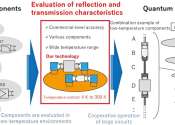Researchers develop evaluation technique for radio-frequency components used in quantum computers
The development of quantum computers is underway around the world, and much attention is focused on increasing the number of qubits that perform operations. On the other hand, looking at the entire system of a quantum computer, ...
Nov 1, 2023
0
66









